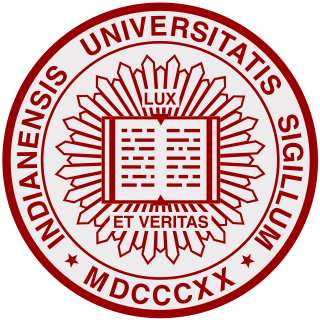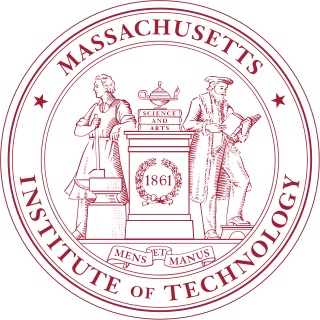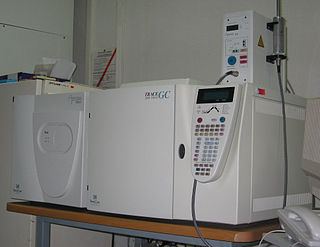
Richard Neil Zare is the Marguerite Blake Wilbur Professor in Natural Science and a Professor of Chemistry at Stanford University. Throughout his career, Zare has made a considerable impact in physical chemistry and analytical chemistry, particularly through the development of laser-induced fluorescence (LIF) and the study of chemical reactions at the molecular and nanoscale level. LIF is an extremely sensitive technique with applications ranging from analytical chemistry and molecular biology to astrophysics. One of its applications was the sequencing of the human genome.

Klaus Biemann was a professor of chemistry at the Massachusetts Institute of Technology. His work centered on structural analysis in organic and biochemistry. He has been called the "father of organic mass spectrometry" but was particularly noted for his role in advancing protein sequencing with tandem mass spectrometry.
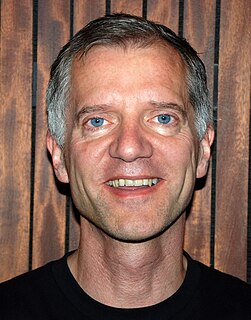
Matthias Mann is a scientist in the area of mass spectrometry and proteomics. Born in Germany he studied mathematics and physics at the University of Göttingen. He received his Ph.D. in 1988 at Yale University where he worked in the group of John Fenn, who was later awarded the Nobel Prize in Chemistry. After a postdoctoral fellowship at the University of Southern Denmark in Odense he became group leader at the European Molecular Biology Laboratory (EMBL) in Heidelberg. Later he went back to Odense as a professor of bioinformatics. Since 2005 he has been a director at the Max Planck Institute of Biochemistry in Munich. In addition, he will also become a principal investigator at the newly founded "Novo Nordisk Foundation Center for Protein Research" in Copenhagen.
Donald F. Hunt is the University Professor of Chemistry and Pathology at the University of Virginia. He is known for his research in the field of mass spectrometry, he developed electron capture negative ion mass spectrometry. He has received multiple awards for his work including the Distinguished Contribution Award from the American Society for Mass Spectrometry and the Thomson Medal from the International Mass Spectrometry Society.
Christie G. Enke is a United States academic analytical chemist.

David E. Clemmer is an analytical chemist and the Distinguished Professor and Robert and Marjorie Mann Chair of Chemistry at Indiana University in Bloomington, Indiana, where he leads the Clemmer Group. Clemmer develops new scientific instruments for ion mobility mass spectrometry (IMS/MS), including the first instrument for nested ion-mobility time-of-flight mass spectrometry. He has received a number of awards, including the Biemann Medal in 2006 "for his pioneering contributions to the integration of ion mobility separations with a variety of mass spectrometry technologies."
Scott A. McLuckey is an American chemist, the John A. Leighty Distinguished Professor of Chemistry at Purdue University. His research concerns the formation of ionized versions of large biomolecules, mass spectrometry of these ions, and ion-ion reactions.
Michael L. Gross is Professor of Chemistry, Medicine, and Immunology, at Washington University in St. Louis. He was formerly Professor of Chemistry at the University of Nebraska-Lincoln from 1968–1994. He is recognized for his contributions to the field of mass spectrometry and ion chemistry. He is credited with the discovery of distonic ions, chemical species containing a radical and an ionic site on different atoms of the same molecule.
Charles W. Gehrke was an American chemist, researcher and business entrepreneur.
Joshua Coon is a professor of chemistry and biomolecular chemistry and the inaugural holder of the Thomas and Margaret Pyle Chair at the University of Wisconsin–Madison, and an affiliate of the Morgridge Institute for Research.
The Eastern Analytical Symposium (EAS) and Exposition is an American organization that sponsors a Symposium and Exposition generally held in Princeton, New Jersey, every November. The Symposium is attended by over 2000 scientists and typically contains several hundred papers by the world's leading authorities on analytical chemistry.
Leslie Stephen Ettre was a Hungarian-American analytical chemist and scientist who was known for his contributions to the field of chromatography, in particular open-tubular gas chromatography, as well as to documentation of the history of chromatography.
Richard Dale Smith is an award-winning chemist and a Battelle Fellow and Chief Scientist within the Biological Sciences Division, as well as the Director of Proteomics Research at the Pacific Northwest National Laboratory (PNNL). Dr. Smith is also Director of the NIH Proteomics Research Resource for Integrative Biology, Principal Investigator for the U. S. Department of Energy Office of Biological and Environmental Research Genome Sciences Program's 'Pan-omics' program at PNNL, an adjunct faculty member in the chemistry departments at Washington State University and the University of Utah, and an affiliate faculty member at the University of Idaho and the Department of Molecular Microbiology & Immunology, Oregon Health & Science University. He is the author or co-author of approximately 1000 peer-reviewed publications and has been awarded 51 US patents.
Purnendu K. Dasgupta is a professor chemistry and biochemistry at the University of Texas at Arlington.
Walter Goodrich Jennings was an American chemist, educator and entrepreneur. He was co-founder of J&W Scientific, which became the world's largest supplier of fused silica columns; the company was purchased by Agilent Technologies in 2000.

Daniel Wayne Armstrong is an American analytical chemist who specializes in chiral chromatography and separation science. He is the Robert A. Welch chair at University of Texas at Arlington. He has authored over 630 publications including 29 book chapters, a book, and holds over 30 patents on separation technologies. He is an associate editor for the prestigious American Chemical Society journal Analytical Chemistry. Armstrong has given over 560 invited seminars worldwide at international conferences and universities.
Marjorie Janice Groothuis Horning is an American biochemist and pharmacologist. She is considered one of the pioneers of chromatography for her work in developing new techniques and applying them to the study of drug metabolism. She demonstrated that drugs and their metabolites can be transferred from a pregnant woman to her developing child, and later through breast milk, from a mother to a baby. Horning's work made possible the prevention of birth defects, as doctors began to warn of the dangers of drugs, alcohol, and smoking during pregnancy.
John Michael Ramsey is an American analytical chemist at the University of North Carolina at Chapel Hill. He currently holds the position of Minnie N. Goldby Distinguished Professor of Chemistry. His current research with the university focuses on microscale and nanoscale devices such as microchip electrospray, microscale Ion trap mass spectrometers, and microfluidic point of care devices. He is ranked #2 in the "Giants of Nano" field on The Analytical Scientist Power List.
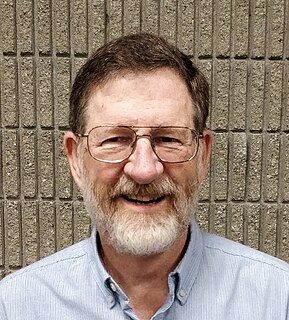
Richard A Yost is an American scientist. He is University Professor and Head of Analytical Chemistry at the University of Florida. He received his BS degree in Chemistry in 1974 from the University of Arizona, having performed undergraduate research in chromatography with Professor Mike Burke and his PhD degree in Analytical Chemistry in 1979 from Michigan State University, having performed graduate research with Professor Chris Enke. He then joined the faculty of the University of Florida. He is director of the Southeast Center for Integrated Metabolomics (SECIM) and of NIH’s Metabolomics Consortium Coordinating Center (M3C). He is also a Professor of Pathology at both the University of Florida and the University of Utah/ARUP.


